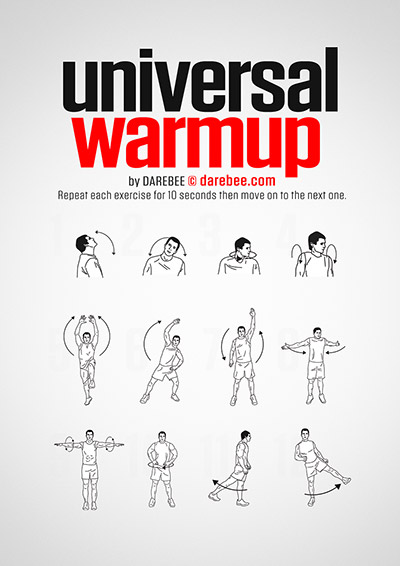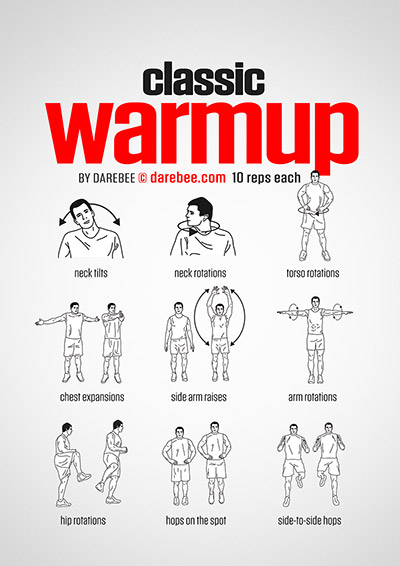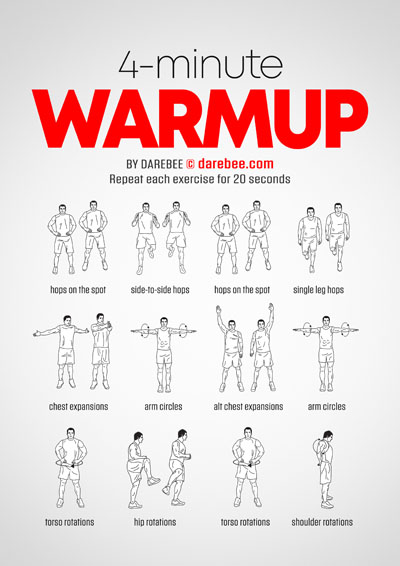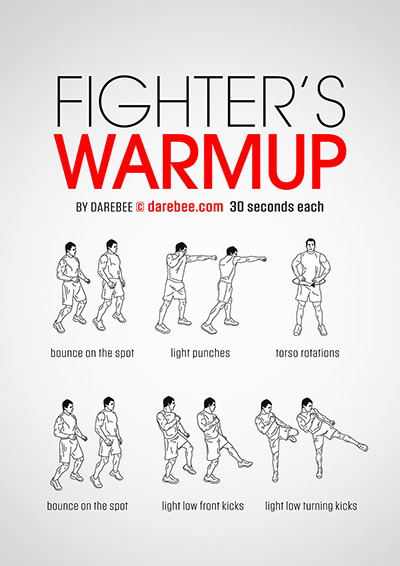To optimize performance and minimize the risk of injury, add a warm-up and a post-exercise cool-down to your sessions. The warm-up facilitates the gradual increase in heart rate and muscle temperature, enhancing blood flow and preparing the body for the demands of physical activity. Conversely, the cool-down helps regulate the body’s return to homeostasis, supporting the recovery process and reducing muscle stiffness and soreness.
Timing: Warm-up First, Cool-down Last
Start with a warm-up before any intense activity, and end your workout with a cool-down and stretching. Warm-ups are crucial for better performance and injury prevention, while stretching is highly recommended but not absolutely necessary. Skipping stretching occasionally won’t cause major issues, but it’s a good habit to maintain for improved flexibility.
Key Difference: Dynamic Warm-ups & Stretching After Exercise
Warm-ups should always be dynamic and involve active movements (e.g., hops, rotations, chest expansions) to increase blood flow and prepare your muscles for the work ahead. This is particularly important in colder weather when your body tends to direct blood away from your extremities. Stretching, on the other hand, is best done after your workout when your muscles are fully warmed up, making them more receptive to deep stretches.
Warm-Ups
A warm-up usually takes 1-2 minutes, with 3 minutes being the maximum for full benefits. A good warm-up should engage the same muscles that you’ll be using during your main workout, often with lighter or modified versions of the exercises you’ll do. Here are some examples:
Running: Start with a light jog to warm up your legs.
Martial Arts: A few light kicks and punches to get your muscles primed.
Bodyweight Workouts: Do some basic neck, arm, torso, and leg rotations.
Weightlifting: Perform a few lifts with very light weights.
DAREBEE Workouts: You can skip a specific warm-up and use the first set of your circuit as a gradual warm-up, moving slower and with less intensity.
Temperature and Seasonality
The ambient temperature can affect how long your warm-up takes. In winter, when the body is more focused on keeping the core warm, it may take longer to warm up. In summer, the body is naturally warmer, and muscles tend to loosen up faster. Some Olympic athletes even train in warmer climates all year round for this reason.
Ready DAREBEE Warm-Ups
Cool-Downs
Cool-downs mark the end of a session and help bring your body back to a normal pace. While cool-downs don’t have to include stretching, they are a great time to incorporate it. It can be anything from yoga or meditation to a gentle jog or walk, all designed to help your body recover and gradually return to a relaxed state.
Stretching during a cool-down is beneficial because your muscles are already warmed up, making them more flexible and able to hold stretches longer. This is the optimal time to stretch, as muscles are most pliable after exercise.
Stretching
Everyone can become more flexible with consistent effort. While some may have a natural ability to stretch, anyone can improve flexibility with regular training. Stretching after your workout is ideal because your muscles are relaxed and fully warmed up, allowing for a deeper stretch and an increase in flexibility.
Well-stretched muscles help improve your range of motion and reduce the risk of injury. For athletes, this is crucial as flexibility allows muscles to move through their full range, improving overall performance. Tight muscles can create resistance, using up energy that could otherwise go toward the movement itself. By stretching, you release that tension, conserving energy and increasing efficiency.
To explore our collection of stretching routines, visit the Workouts page and filter by “Stretching.”















